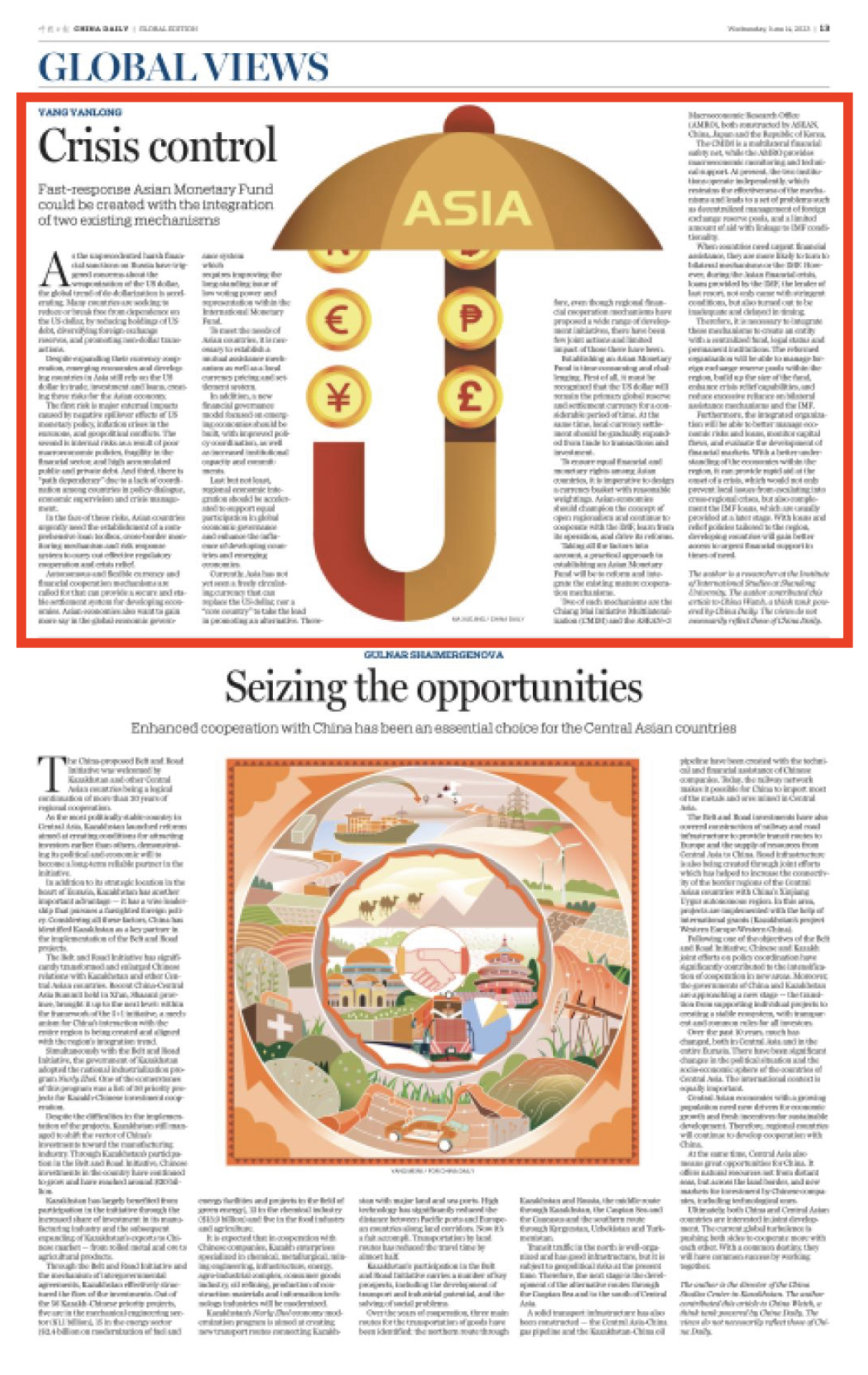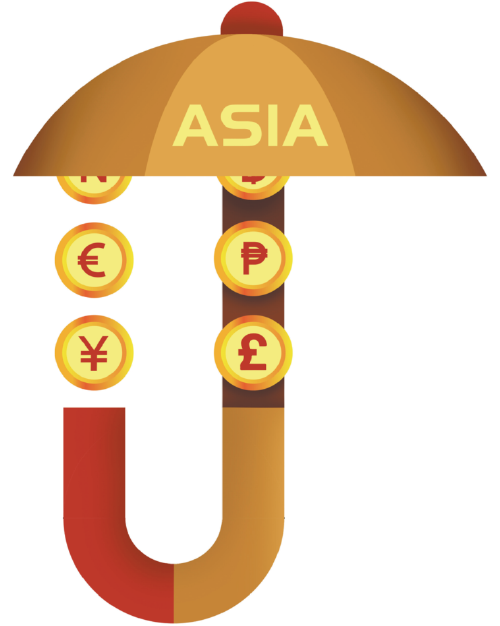

MA XUEJING/CHINA DAILY
Fast-response Asian Monetary Fund could be created with the integration of two existing mechanisms
As the unprecedented harsh financial sanctions on Russia have triggered concerns about the weaponization of the US dollar, the global trend of de-dollarization is accelerating. Many countries are seeking to reduce or break free from dependence on the US dollar, by reducing holdings of US debt, diversifying foreign exchange reserves, and promoting non-dollar transactions.
Despite expanding their currency cooperation, emerging economies and developing countries in Asia still rely on the US dollar in trade, investment and loans, creating three risks for the Asian economy.
The first risk is major external impacts caused by negative spillover effects of US monetary policy, inflation crises in the eurozone, and geopolitical conflicts. The second is internal risks as a result of poor macroeconomic policies, fragility in the financial sector, and high accumulated public and private debt. And third, there is "path dependency" due to a lack of coordination among countries in policy dialogue, economic supervision and crisis management.
In the face of these risks, Asian countries urgently need the establishment of a comprehensive loan toolbox, cross-border monitoring mechanism and risk response system to carry out effective regulatory cooperation and crisis relief.
Autonomous and flexible currency and financial cooperation mechanisms are called for that can provide a secure and stable settlement system for developing economies. Asian economies also want to gain more say in the global economic governance system which requires improving the long-standing issue of low voting power and representation within the International Monetary Fund.
To meet the needs of Asian countries, it is necessary to establish a mutual assistance mechanism as well as a local currency pricing and settlement system.
In addition, a new financial governance model focused on emerging economies should be built, with improved policy coordination, as well as increased institutional capacity and commitments.
Last but not least, regional economic integration should be accelerated to support equal participation in global economic governance and enhance the influence of developing countries and emerging economies.
Currently, Asia has not yet seen a freely circulating currency that can replace the US dollar, nor a "core country" to take the lead in promoting an alternative. Therefore, even though regional financial cooperation mechanisms have proposed a wide range of development initiatives, there have been few joint actions and limited impact of those there have been.
Establishing an Asian Monetary Fund is time-consuming and challenging. First of all, it must be recognized that the US dollar will remain the primary global reserve and settlement currency for a considerable period of time. At the same time, local currency settlement should be gradually expanded from trade to transactions and investment.
To ensure equal financial and monetary rights among Asian countries, it is imperative to design a currency basket with reasonable weightings. Asian economies should champion the concept of open regionalism and continue to cooperate with the IMF, learn from its operation, and drive its reforms.
Taking all the factors into account, a practical approach to establishing an Asian Monetary Fund will be to reform and integrate the existing mature cooperation mechanisms.
Two of such mechanisms are the Chiang Mai Initiative Multilateralization (CMIM) and the ASEAN+3 Macroeconomic Research Office (AMRO), both constructed by ASEAN, China, Japan and the Republic of Korea.
The CMIM is a multilateral financial safety net, while the AMRO provides macroeconomic monitoring and technical support. At present, the two institutions operate independently, which restrains the effectiveness of the mechanisms and leads to a set of problems such as decentralized management of foreign exchange reserve pools, and a limited amount of aid with linkage to IMF conditionality.
When countries need urgent financial assistance, they are more likely to turn to bilateral mechanisms or the IMF. However, during the Asian financial crisis, loans provided by the IMF, the lender of last resort, not only came with stringent conditions, but also turned out to be inadequate and delayed in timing.
Therefore, it is necessary to integrate these mechanisms to create an entity with a centralized fund, legal status and permanent institutions. The reformed organization will be able to manage foreign exchange reserve pools within the region, build up the size of the fund, enhance crisis relief capabilities, and reduce excessive reliance on bilateral assistance mechanisms and the IMF.
Furthermore, the integrated organization will be able to better manage economic risks and loans, monitor capital flows, and evaluate the development of financial markets. With a better understanding of the economies within the region, it can provide rapid aid at the onset of a crisis, which would not only prevent local issues from escalating into cross-regional crises, but also complement the IMF loans, which are usually provided at a later stage. With loans and relief policies tailored to the region, developing countries will gain better access to urgent financial support in times of need.
The author is a researcher at the Institute of International Studies at Shandong University. The author contributed this article to China Watch, a think tank powered by China Daily.
The views do not necessarily reflect those of China Daily.
Contact the editor at editor@chinawatch.cn